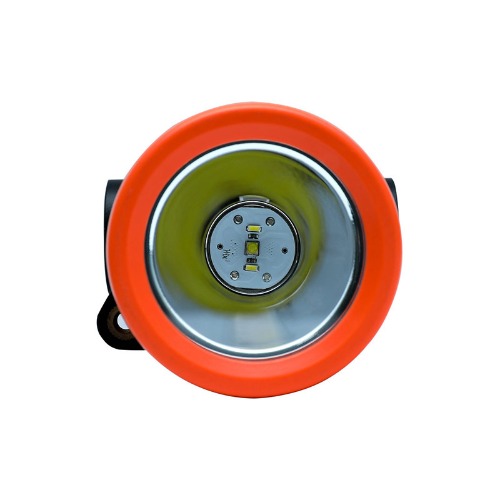Explosion-proof lamps, also known as hazardous location lamps, are designed and classified to be used in environments where there is a risk of explosion or fire due to the presence of flammable gases, vapors, or combustible dust. These lamps are constructed with specialized features and materials to prevent the ignition of hazardous substances. The classification of explosion-proof lamps is typically based on the following criteria:
Hazardous Location Classification: Explosion-proof lamps are classified according to the specific hazardous location in which they can be used. These classifications are defined by various standards and regulations, such as the National Electrical Code (NEC) in the United States or the International Electrotechnical Commission (IEC) standards. Some common classifications include:
Class I: For use in locations where flammable gases or vapors are present.
Class II: For use in locations where combustible dusts are present.
Class III: For use in locations where easily ignitable fibers or flyings are present.
Within each class, there are further divisions and zones that specify the level of hazard and the lamp's suitability for different environments.
Protection Method: Explosion-proof lamps employ specific protection methods to prevent the ignition of flammable substances. These protection methods are denoted by a combination of letters and numbers, such as Ex d, Ex e, Ex n, Ex p, etc. Some commonly used protection methods include:
Ex d: Flameproof/Explosion-proof enclosure that can contain any explosion within it.
Ex e: Increased Safety design that prevents the generation of sparks or excessive temperatures.
Ex n: Non-sparking design suitable for use in environments with low-risk levels.
Ex p: Pressurized design that prevents the entry of hazardous gases or dust into the lamp.
Certification and Standards: Explosion-proof lamps are required to meet specific certification and testing standards to ensure their safety and reliability. Common certifications include ATEX (Appareils destinés à être utilisés en ATmosphères EXplosibles) for Europe, UL (Underwriters Laboratories) for the United States, and IECEx (International Electrotechnical Commission System for Certification to Standards Relating to Equipment for Use in Explosive Atmospheres) for international compliance.
Besides,Explosion-proof lamps offer several advantages in hazardous environments where there is a risk of explosion or fire. Here are some key advantages of using explosion-proof lamps:
Safety: The primary advantage of explosion-proof lamps is their ability to prevent the ignition of flammable gases, vapors, or combustible dust. These lamps are designed with specialized features and construction materials to contain any potential sparks, heat, or electrical arcs within the lamp's enclosure, minimizing the risk of causing an explosion.
Hazard Mitigation: Explosion-proof lamps help mitigate the risks associated with hazardous locations. By utilizing robust design, sealing techniques, and protective features, these lamps can withstand the harsh conditions found in potentially explosive atmospheres, reducing the likelihood of accidents or incidents.
Compliance with Regulations: Explosion-proof lamps are specifically designed to meet stringent safety standards and regulatory requirements. They undergo testing and certification processes to ensure their suitability for use in hazardous locations, providing peace of mind and compliance with relevant safety regulations, such as the NEC, IEC, ATEX, or UL standards.
Durability and Reliability: These lamps are constructed with durable materials and designed to withstand harsh environments, including exposure to chemicals, moisture, dust, and vibrations. This ensures their long-term reliability, reducing maintenance and replacement costs.
Versatility: Explosion-proof lamps are available in various types and configurations to suit different lighting requirements. They can be found in different form factors, such as floodlights, high bay lights, area lights, task lights, or emergency lighting, allowing for flexibility in lighting design and application.
Energy Efficiency: Many explosion-proof lamps utilize LED (Light Emitting Diode) technology, which offers high energy efficiency and long operational life. LED lamps consume less energy compared to traditional lighting sources, resulting in reduced energy costs and environmental impact.
Enhanced Visibility and Illumination: Explosion-proof lamps provide high-quality, reliable lighting in hazardous areas, ensuring sufficient visibility and illumination for work activities. They offer bright, uniform, and flicker-free light, improving safety and productivity in these challenging environments.
Reduced Maintenance: Due to their robust construction and durability, explosion-proof lamps typically require minimal maintenance. They can withstand extreme temperatures, humidity, and mechanical stress, reducing the need for frequent lamp replacements or repairs.
Cost Savings: While explosion-proof lamps may have a higher initial cost compared to standard lamps, their long lifespan, energy efficiency, and reduced maintenance needs can result in significant cost savings over time.
Overall, explosion-proof lamps offer crucial safety features, regulatory compliance, durability, and reliable lighting performance in hazardous locations. These lamps help protect personnel, equipment, and the environment by minimizing the risks associated with potential explosions or fires.



 English
English Español
Español

